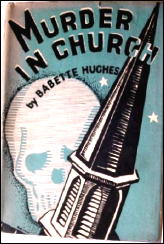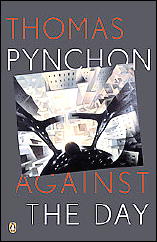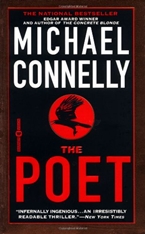Tue 1 Dec 2009
Reviewed by William F. Deeck: BABETTE HUGHES – Murder in the Church.
Posted by Steve under Authors , Bibliographies, Lists & Checklists , Crime Fiction IV , ReviewsNo Comments
William F. Deeck
BABETTE HUGHES – Murder in Church. D. Appleton-Century, hardcover, 1934.

Sir Arthur Quinn is a famous astrophysicist who is the bane of the religionists. He had shown “the theologians to be charlatans, religions to be apologies, and his more cautious confreres to be opportunists.”
Besides that, he is given to amorous intrigues, mushrooms for breakfast, and the sucking of fruit lozenges. It is the latter habit, possibly combined with the second, that brings about his death as he rather uncharacteristically attends Sunday services at St. Barnabas Church. Someone had coated several lozenges with muscarin, a poison that is derived from mushrooms.
Among the possibilities for the distinction of bumping him off are President Radford of the Western Institute of Technology, a pompous oaf who tries vainly to reconcile religion and science; Yozan Saijo, a Japanese physicist whom Quinn has insulted; Quinn’s “sexless” wife who worships him despite his philandering; a professional dancer whose movements were harsh and whose interpretations were grotesque and often venomous, and who had been one of many of Quinn’s inamoratas; George Coburn, Quinn’s valet, an ex-English jockey who sports a black eye given him by Quinn; a fanatically religious Russian technician, and others too numerous to mention.
Quinn had religious, scientific, and personal enemies, it seems.
Ian Craig, professor of Oriental literature at Stanford and frequent quoter of the aphorisms of Ti Li, is the amateur investigator. He gained some little renown when he solved the case chronicled in Murder in the Zoo (1932), another academic mystery.
This is one of the selections in “The Tired Business Man’s Library,” chosen to “afford relaxation and entertainment for everyone interested in Adventure and Detective Fiction.” Murder in Church meets that goal, but only barely.
Bio-Bibilographic Data. [Taken from the Revised Crime Fiction IV, by Allen J. Hubin.]
HUGHES, BABETTE (Plechner). 1906-?? Born and resident in Seattle; graduate of University of Washington; wife of playwright Glenn (Arthur) Hughes; author of numerous one-act plays.
Murder Murder Murder. French, pb, 1931. One-act play.
Murder in the Zoo. Appleton, 1932. [Prof. Ian Craig]
Murder in Church. Appleton, 1934. [Prof. Ian Craig]
















